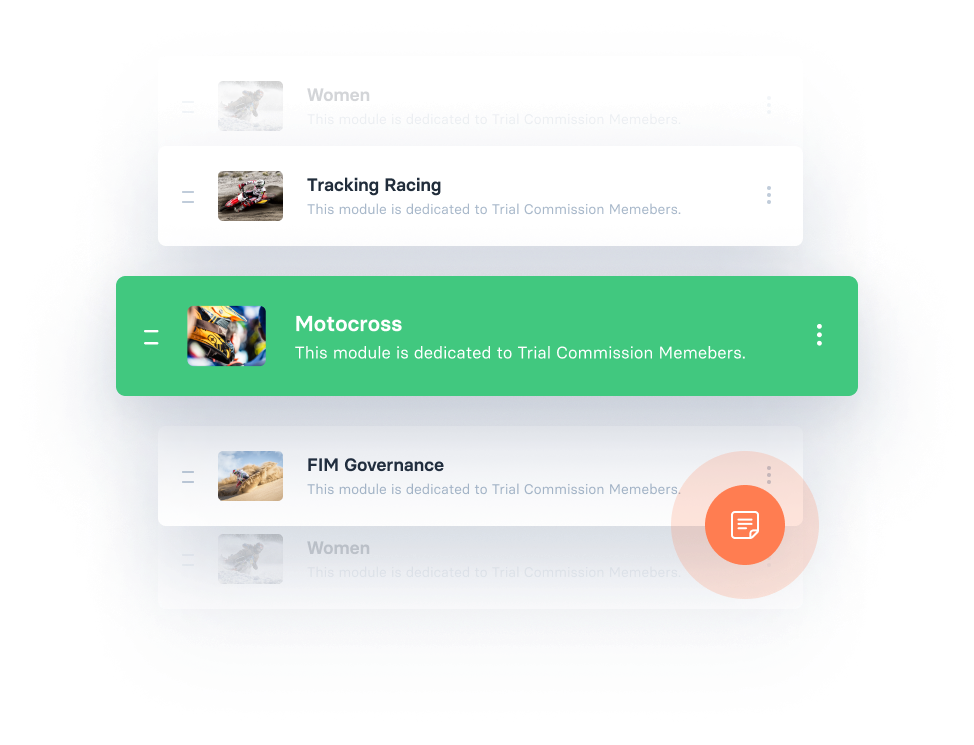What is a Learning Management System?
TheLearning LAB is an eLearning course design agency producing high-quality eLearning courses since the company was founded.
From its headquarters in Zurich, TheLearning LAB serves customers across Europe and around the world with its flexible eLearning course design service, which can be adapted to suit the needs of any business or organization.
What is a Learning Management System?
A learning management system (LMS) is an online platform that helps you and your team create, deliver, and manage eLearning courses. The LMS serves as a central hub where all your content, lessons, interactions, assessments, deadlines, and more can be managed at one time.
They can be complicated to set up—you typically need to hire developers to create custom course platforms—but once you do, you can use your LMS to make all sorts of eLearning tools.
A learning management system offers some key benefits over conventional methods. For instance, it provides educators with a powerful toolkit that makes it easy to organize and deliver content quickly. Since they are web-based, they do not require installation on each user's computer; instead, users access them through their browsers, making them highly accessible.
With LMS, students have complete control over their progress, unlike more traditional learning environments where students must attend class at specific times or risk falling behind their peers if they miss an assignment or two.
And if you are using a hosted solution like TheLearning LAB LMS, there is no cost associated with implementation or maintenance; everything is included in one monthly fee.
How do learning management systems work?
A learning management system (LMS) is software that enables you to
create, deliver, track and measure elearning training courses. Most are web-based systems that let you build courses using various eLearning tools and content, including interactive simulations and video.
They also allow educators to communicate with learners in real-time by sharing documents, links, or assignments. A good LMS like TheLearning LAB automates administrative tasks so you can focus on delivering quality training to your employees in an easy-to-use format.
As learners work through eLearning modules designed with specific learning objectives, they receive instant feedback as they progress through their coursework and can monitor their progress over time.
Types of learning management systems
Traditional LMS
These are perhaps some of the oldest eLearning platforms around, dating back decades to when they were simply physical pieces of paper that organized course information and tracked student attendance.
Cloud-based LMS
A cloud-based learning management system is a web-based learning management system offered on a subscription basis. They are a trendy option among eLearning companies because they have numerous benefits over traditional LMS.
These include reduced IT costs, having less to manage and operate, scalability, lower hosting fees, and speedier creation times.
Self-hosted LMS
A self-hosted LMS allows you full control over what features are available on your elearning platform and makes it easy to add new features. You get all these benefits without having to pay a monthly fee. The downside is that you will need technical expertise to set up, maintain and make changes to your system.
Corporate LMS
In a corporate learning environment, a learning management system (LMS) is software that stores, organizes, and tracks all learning materials on behalf of your company. Companies use LMS to ensure their employees have access to all necessary information in one place.
How to choose the best LMS: 6 factors to consider
Selecting the right learning management system (LMS) to suit your needs is no easy task, especially when considering all the factors that should influence your decision. To get started on choosing the best LMS, here are 6 factors to consider.
1. How easy is it to create new courses? An LMS should offer extensive course-creation options. For example, if you want to provide different learning paths based on students' goals or performance levels, you need an LMS or eLearning Platform that lets you create customized versions of existing modules.
2. You also need to think about how long it takes to design a new elearning course. If you plan on launching several programs every year, you probably want an LMS or eLearning Platform that does not require too much effort.
3. Does it integrate with other elearning platforms? It may seem like common sense, but your ideal LMS or eLearning Platform needs to work seamlessly with other tools in your workflow.
4. How do users engage with the elearning platform? When creating eLearning courses, speed is essential—you should not waste time waiting for users to complete processes that could easily be automated.
5. What kind of support does it offer? Support is significant if you are planning to use an LMS or eLearning Platform for employee training. Make sure your chosen system provides 24/7 customer service so that questions are answered quickly and efficiently.
6. What kind of reporting features does it have? At some point, you will likely want to see how well your eLearning program has been performing. Look for an LMS or eLearning Platform that provides detailed reports so you can track engagement rates, completion rates, and more.



